About Sudan
7720
ACIT'2024 will be held in Zarqa University, December 10-12, 2024 -Zarqa, Jordan
7720
Location and Size:
Sudan is located in the northeastern part of the continent of Africa with a total area of 1,882,000 square kilometers. Sudan is the second largest country in Africa, the third in the Arab world and it comes sixteenth among the world. Due to its unique geographical location, Sudan was always been a trading and cultural bridge between southern and northern Africa as well as between the Arabian Peninsula and West Africa.
Sudan is bounded by seven countries: Egypt in the north, Libya in the north-west, Chad in the west, the Central African Republic in the south-west, and the Republic of South Sudan in the south and Eritrea and Ethiopia in the east as well as the Red Sea in the north-east.

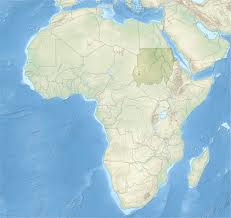
Climate: Desert, semi-desert and dry in the utmost north. Semi-desert to rainy in central and southern regions and Mediterranean in the eastern areas.
Relief:
Sudan’s land area is about 1,752,187 square kilometers, water area is about 129,813 square kilometers; coastline 875 kilometers. The main river in Sudan is the Nile, and it has two branches, the White Nile and Blue Nile. The White Nile extends from the Uganda border to Khartoum, which joins the Blue Nile, and the two rivers form the Nile River. The Blue Nile starts in the Ethiopian Plateau. Plateau and plains predominate, which is crossed, from the south to the north, by the valley of the Nile River, formed by the convergence of the White and the Blue Nile. Khartoum, the capital of the country, lies in the area of their merger. All of Sudan’s rivers belong to the Nile basin. In the north stretch the Libyan Desert and Nubian Desert with almost no vegetation. In the south, there are savannahs and tropical swamps. The eastern and western parts of the country are covered by mountains.
Capital: Khartoum


Religion:
Islam: 96.7 percent of the population adheres to Islam and it is in all northern Sudan and large parts of the south. Islam spread to the Sudan from the north, after the Islamic conquest of Egypt In the summer of 642AD, 'Amr ibn al-'As sent an expedition to Nubia under the command of his cousin 'Uqbah ibn Nafi.
Christianity: The oldest religion in the Sudan and are currently in the Nuba Mountains and south of the country where citizens belong to multiple Catholic churches and evangelical Protestantism. There is also a Coptic Orthodox Church in northern Sudan.
Languages:
There are more than 115 languages and hundreds of dialects, most important of these languages:
Culture:
Sudan is a multi-cultures, races and languages
and the most important sub-cultures are;
Beja in eastern
Sudan in the eastern plains Sudan, Almapan in mountains Inqasna on the Blue
Nile. Fung in the central parts of the Blue Nile, Nubians in northern Sudan,
the population of the Nile in northern and central Sudan, the population of the
savanna region in the mid-western Sudan, in the Nuba mountains of South
Kordofan.
Mountains:
Mount Oda (2,259 m) is the highest summit of the plateau in the Nubian Desert, situated east of the Nile Valley.
In the far west of Sudan lies the Darfur Plateau, with heights from 1,500 to 3,000 m (the highest point is Mount Marra, 3,088 m). A number of separate ranges, from 750 to 1000 m high, are scattered between the Kordofan Plateau and the Darfur Plateau.
Other important mountain ranges in Sudan are the Kurdufan Plateau with heights from 300 to 600 m, Mount Pemading (1,460m), Moint Haraza (1,127m) and Mount Kineti (3,187 m), which is considered the highest point of the Ethiopian Highlands.
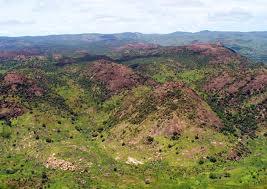

Tourism:
Sudan geographically vast and rich natural resources
is an important destination for investments in the various
squares and foremost in the tourism sector, particularly natural
and environmental due to the availability natural environments
ranging from forests and woodlands,
rivers and beaches and desert allowing the
presence of tourist destinations several
safaris and hospitalization
and Sports maritime, river and desert.
Wildlife in the Sudan is an important source of tourism; it boasts many natural reserves such as protected Dinder's largest barn for the animals and birds on the continent of Africa north of the equator and has an area of 3500 square miles. Protected Alrdom in South Darfur, a virgin protected scenic.


Fishing in Sudan is also one of the most important sources of tourism, allowable fishing seasons and in accordance with the decisions of government so as to maintain the ecological balance of wild life.
National Museum:
Sudan’s National Museum is located in Khartoum. Housing great historical antiquities and artifacts, the museum has been a spot of interest and tourist attraction in recent years. The museum contains antiquities and artifacts from several periods of Sudanese history and pre-history, including glassware, pottery, statuary and figurines from the ancient kingdom of Cush. Ancient Nubia's Christian period is well-represented, with frescoes and murals from ruined churches, dating from the 8th to the 15th century. The Museum's garden contains two reconstructed temples, which have been salvaged from the Nubian land flooded by Lake Nasser. These Egyptian temples of Buhen and Semna were originally built by Queen Hatshepsut and Pharaoh Tuthmosis III respectively. The temples have corrugated iron covers built over them to protect them from humidity during the wet season. The original concept was to roll back these covers during the dry season, but whether this ever happened or not is unclear. The covers are rusted into place and are now permanent and immovable!
Ethnographical Museum is a small museum which contains an interesting collection of items relating to Sudanese village life. These include musical instruments, clothing, cooking and hunting implements.
Sightseeing:
The city of Meroe lies on the eastern bank of the Nile, north-east of Shende between Khartoum and Atbara. There are numerous ruins of ancient pyramids here (dated 350-350 BC).

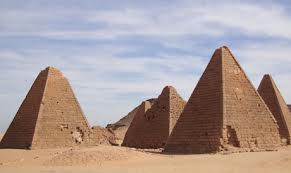
Port Sudan is the second largest city in Sudan. This is a major sea port built by the British in 1905 to replace the old port of Suakina (which was impossible to use because of corals). There is also 'Snguenib' marine barn on the Red Sea, a fully circular and it is called the diverse heaven given the wealth of coral reefs and colorful fish.
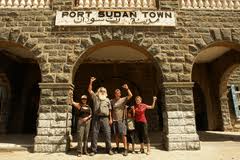

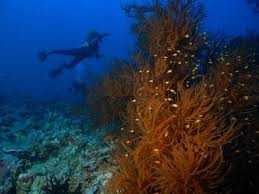
Suakin (58 km south of Port Sudan) used to be the main center of commerce near the Red Sea, especially in the 19th century - in the heyday of slave trade.
The Marrah Mountains or Marra Mountains is a range of volcanic peaks created by a massif that rises up to 3,000 m. It is located in the center of the Darfur region of Sudan, specifically within Dar Zagahawa and neighboring areas. Jebel Marra (Jabal Mara) is a luxurious area of small mountains in the Darfur Province, which has always been a popular trekking area.

A walk around Tuti Island, situated in the middle of the confluence of the two branches of the Nile, can take about 4 hours. The less populated northern section is pretty, with its shady lanes, and irrigated fields, and there is a great little coffee stall under a tree on the western side.